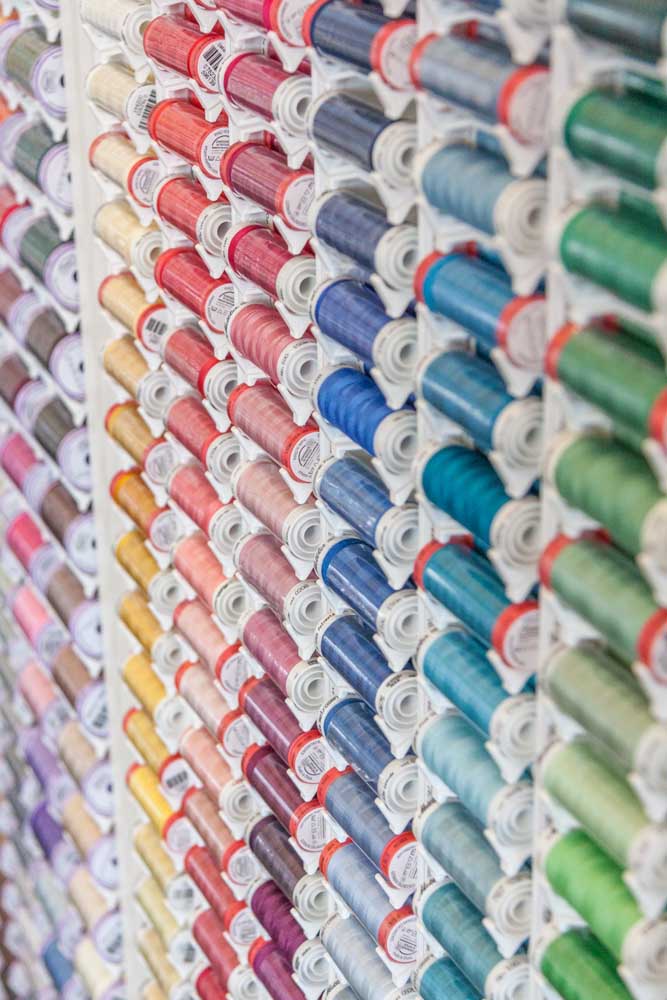A Resurgence of Sewing
Published 12:00 am Saturday, April 9, 2016

- A Resurgence of Sewing
The salesperson was direct — “This baby comes with high-def touchscreen, stadium lighting, IQ technology, a wicked fast processor, color visualizer and needle beam so precise it’s like a military strike.”
Welcome to the world of modern-day sewing machines.
“Sewing has changed more in the last 15 years than in the last 300,” said Karen Jarrett, owner of Morrow’s Sewing & Vacuum Center in Bend. Technological advances in sewing and quilting machines, software and online support have reduced the intimidation factor, especially for the younger generation. Computer software allows crafters to design creations on their computer, and then sync it with an automated sewing machine, negating years of ripped out seams.
Sewing, quilting, embroidery … anything to do with a needle, thread and fabric is on the upswing. Whether it’s the DIY crowd making clothes or following trends on Pinterest, to baby-boomers looking for a social outlet, there has been a strong resurgence of sewing in recent years.
It’s hard to pin the resurgence of sewing on any one point. There’s reality television’s “Project Runway” where designers compete, or perhaps it’s a need for extra income or the desire for a social outlet.
“Handmade and homemade is very popular now across generations,” said Vicki Jensen, owner of BJ’s Quilt Basket in Bend.
“You can buy a $150 sewing machine or a $37,000 long-arm quilting machine,” said Marilyn Forestell, owner of the Bend Quilt Works. “And there’s a lot of choices in-between.”
Most sewing machines aren’t built to just stitch forward and backward anymore.
“Some machines can paint on a china plate or cut wood,” explained Sharon Botkins, owner of Sew Many Quilts in Bend.
In Central Oregon, the sewing centers and quilting shops offer sewing classes on different topics related to sewing — quilting, stitching, embroidery … you name it.
“We have some students that only sew when they are in the store taking a class. They love spending time creating together, but never finish their homework!” said Jarrett.
Classes range from the one-hour, “Sewing 101” type to multi-day courses that sometimes feature an international instructor.
“We offer classes like ‘Quilt Til You Wilt’ or ‘Sew and Tell,’” said Jensen. These marathon courses go from 10 a.m. to 10 p.m. with lunch and dinner included. “Besides not having to cook and clean, there is camaraderie in being together while sewing,” she added.
For those who want to stay home and learn or can’t make it to a class, there are online classes, YouTube instructional videos or private instructors such as Professor Pincushion (www.professorpincushion.com) who provides support via Skype.
Another version of the in-store class is the Virtual Club that Sew Many Quilts offers. Participants show up and watch a live on-screen presentation, then work on the presented piece together.
“In this industry it is as much about relationships as the process of creativity,” said Botkins. “Friendships, sharing together and exchanging ideas. It’s a great excuse to get together and create.”
Forestell echoed that sentiment explaining that within the larger group of regional crafters, there are mini groups all over the region.
“There are the Thread Heads, the Block and Robins, Fabric Stalkers and others,” said Forestell.
Some people work on projects to donate to nonprofits, others work on versions of a single theme such as the Deschutes Public Library’s Novel Idea. But the theme of having fun, being social and creating binds these groups together. As an example, during Forestell’s March Strip Club (no … it’s making projects out of strips of fabric) she dressed as a stripper to create a fun and lively mood. A participant in the class needled Marilyn about her “profession” and her outfit. Needless to say, her class left in stitches (pun intended).








